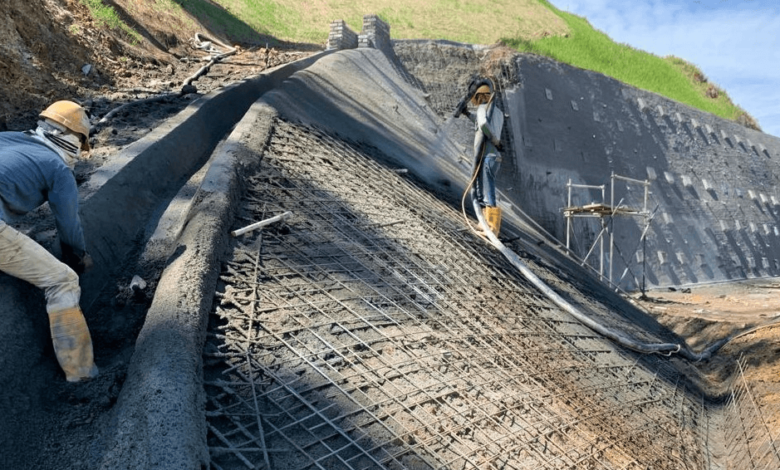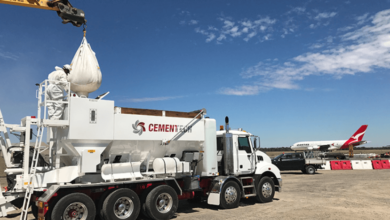Geomalla: A Modern Solution for Soil Stabilization

In modern civil and geotechnical engineering, the challenge of building stable infrastructure on weak or shifting soil is an ongoing concern. To address this, professionals increasingly turn to geosynthetic solutions. One standout material among these innovations is the geomalla, known for its strength, flexibility, and ability to reinforce various types of terrain. This article explores the definition, function, advantages, and applications of geomalla, as well as its growing role in sustainable infrastructure.
What Is Geomalla?
Geomalla is a geosynthetic product designed to reinforce soil, aggregate, or other earth materials. Structurally, it resembles a grid or mesh with openings that allow the fill material to penetrate through and interlock. This interlocking mechanism is what allows geomalla to dramatically improve the strength and stability of the surrounding soil.
Typically manufactured from high-density polyethylene (HDPE), polypropylene, or polyester, geomalla comes in different patterns—uniaxial, biaxial, and triaxial—each suited to specific load-bearing requirements. Due to its synthetic composition, it is also resistant to corrosion, chemical attack, and biological degradation, making it ideal for long-term infrastructure projects.
Core Functionality of Geomalla
The primary function of geomalla is soil reinforcement. It enhances the mechanical behavior of soil by resisting tensile forces and distributing loads more evenly across a surface Geomalla addresses this shortfall by providing tensile strength where the soil cannot.
When geomalla is laid between layers of soil or aggregate, it prevents the lateral movement of the material and confines it within the mesh. This confinement increases the shear strength and stiffness of the entire soil-structure system. It not only stabilizes the base but also prolongs the life of the structure above.
See also: Insulated Champagne Flutes Bulk: Modern Luxury Meets Practicality
Types of Geomalla and Their Uses
Triaxial Geomalla
The latest development in the field, triaxial geomallas distribute forces in three directions and offer even better performance for load-bearing and soil confinement. They’re especially effective in heavy-duty applications such as airport runways and large industrial yards.
Benefits of Using Geomalla
1. Increased Load Capacity
Geomalla reinforces weak subgrades, allowing them to support heavy loads such as vehicles, machinery, and buildings. This is particularly useful in areas where native soil is loose, wet, or expansive.
2. Reduced Material Costs
By enhancing the mechanical properties of the soil, geomalla reduces the need for expensive imported fill material. Thinner pavement layers can be used without compromising on performance.
Common Applications
Road Construction
Geomalla is often used beneath road bases and asphalt layers. It prevents rutting and cracking by distributing the load over a wider area and stabilizing the underlying materials.
Railways
Under rail beds, geomalla provides lateral stability and prevents ballast migration, ensuring smoother, safer rail operation.
Retaining Walls
Geomalla enables the construction of mechanically stabilized earth (MSE) walls that are more flexible and cost-effective than traditional concrete walls.
Slopes and Embankments
On steep slopes, geomalla helps resist erosion and landslides by anchoring soil layers and supporting vegetation growth.
Foundations
In foundation engineering, geomalla reinforces the ground beneath buildings and industrial structures, preventing settlement and improving stability.
Key Installation Guidelines
Proper installation is vital for the success of any geomalla-based system. The following general steps are typically followed:
- Surface Preparation: Clear and level the area where geomalla will be placed. Remove debris and large stones.
- Laying the Geomalla: Unroll the geomalla over the prepared base, aligning it according to the direction of the expected loads.
- Joining: Overlap sections by 30–50 cm or follow manufacturer recommendations. In high-load areas, mechanical fastening may be required.
- Filling and Compaction: Spread the aggregate or soil over the geomalla and compact it in layers. Proper compaction ensures full interaction between the geomalla and the fill material.
- Inspection: Ensure that the geomalla is flat, properly joined, and tensioned before continuing with further layers.
Case Study: Rural Road Stabilization in South America
In a rural road project in South America, engineers faced significant issues due to the region’s soft clay subgrade and seasonal flooding. Traditional construction methods would have required extensive excavation and soil replacement.
Instead, a biaxial geomalla was installed under a thin layer of gravel. The results were remarkable—construction time was reduced by 40%, costs dropped by 25%, and the road’s lifespan was extended significantly. Even during the rainy season, the road remained stable and operational, highlighting the transformative impact of geomalla.
Factors to Consider Before Choosing Geomalla
Before selecting a geomalla for any project, several factors must be evaluated:
- Soil Type: The strength and cohesiveness of the soil will influence the choice between uniaxial, biaxial, or triaxial geomalla.
- Load Characteristics: Projects with heavy, dynamic loads may require high-tensile-strength geomallas.
- Environmental Conditions: Exposure to chemicals, UV light, or temperature extremes requires durable and resistant materials.
Conclusion
Geomalla has revolutionized the field of ground stabilization and soil reinforcement. Its strength, adaptability, and cost-efficiency make it indispensable for modern infrastructure. Whether stabilizing a rural road, supporting a retaining wall, or reinforcing an airport runway, geomalla delivers performance that traditional methods struggle to match.
As civil engineering continues to embrace sustainable and innovative materials, geomalla will undoubtedly play a central role in shaping the resilient infrastructure of tomorrow.





